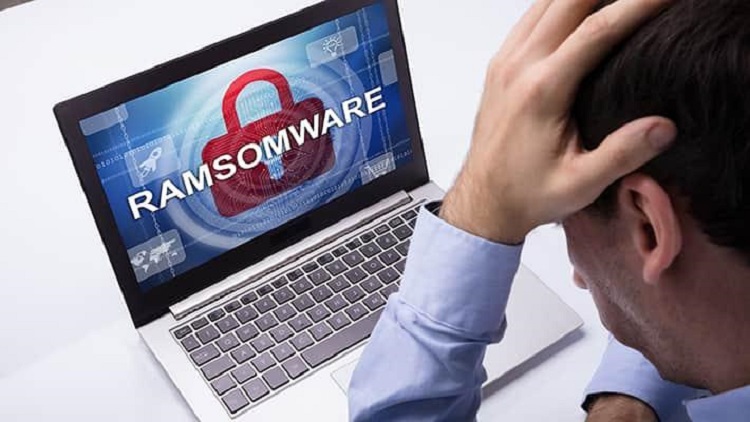Ransomware attacks are increasingly common, and their consequences can be devastating. This type of malware encrypts your data, locks your files, and demands a ransom for a decryption key. However, paying the ransom is not a recommended solution, as it doesn’t guarantee data recovery and often leads to more attacks. Instead, it’s crucial to understand how to effectively remove ransomware and safeguard your system from future infections.
Let’s walk through the steps for detecting, removing, and preventing ransomware.
Table of Contents
Step 1: Recognize the Signs of a Ransomware Attack
Ransomware doesn’t always announce itself immediately, so it’s essential to spot early indicators:
- Unresponsive or Locked Files: If files suddenly become inaccessible or have unusual extensions (e.g., .lock, .crypted), ransomware may have encrypted them.
- Ransom Messages: A pop-up or text file demanding payment for file access is a clear indication of ransomware.
- Performance Issues: If your system becomes noticeably slower or displays frequent errors, ransomware could be running in the background.
Identifying these signs early helps contain the malware before it spreads across devices or networks.
Step 2: Disconnect from the Network
Ransomware is notorious for spreading to other systems and devices on the same network. To prevent further contamination:
- Disconnect the Affected Device: Turn off Wi-Fi and unplug any network cables to isolate the infected system.
- Disable File Sharing: Ensure shared files and folders are inaccessible from other devices.
- Avoid Reconnecting: Do not reconnect the infected device until the malware is removed, as the ransomware could spread instantly upon re-connection.
Isolating the infected system helps contain the attack and limits damage to other connected devices. Notably, proper guidance can minimize the risks of unusual damage to technological assets, which is an essential requirement of modern businesses.
Step 3: Identify the Ransomware Strain
Determining the ransomware variant can guide the removal and recovery process. Various online tools, such as ID Ransomware, allow you to upload an encrypted file or ransom note to identify the ransomware type. Knowing the strain will help determine the best approach for removal and whether a decryption tool is available.
Step 4: Remove the Ransomware
Once the ransomware is contained and identified, proceed with these steps to remove it:
Use Antivirus and Anti-Malware Software
- Full System Scan: Most antivirus programs offer full system scans designed to detect and eliminate ransomware.
- Safe Mode Scan: If the ransomware prevents you from running a scan, restart your computer in Safe Mode (usually accessed by pressing F8 on startup) and run the antivirus software there.
- Quarantine: If the antivirus detects ransomware, allow it to quarantine and delete the infected files.
Manual Removal (Advanced Users)
Some ransomware may evade antivirus programs. For advanced users, manually removing ransomware by inspecting Task Manager (for suspicious processes) and deleting temporary files in %TEMP% may help. However, manual removal can be risky, as deleting critical system files can damage your system.
Step 5: Restore Files from Backup
The safest and most reliable way to recover encrypted files is from an unaffected backup:
- External Backups: If you keep offline backups or use cloud storage services, restore your files from these locations after removing the ransomware.
- Avoid Restoring Infected Files: Before restoring, scan the backups to ensure they don’t contain malware.
Regular backups help you avoid paying ransoms and allow quick file restoration.
Step 6: Secure Your System Against Future Attacks
Removing ransomware is only part of the process—securing your system to prevent future infections is just as important. Here’s how:
Regular Software Updates
- Patch Vulnerabilities: Ransomware often exploits security flaws in outdated software. Keeping your operating system, applications, and antivirus software up-to-date reduces vulnerabilities.
Enable Real-Time Protection
- Advanced Security Tools: Invest in antivirus programs with real-time protection, network security, and ransomware-specific defenses. Modern antivirus tools can detect ransomware early, stopping it before it locks files.
Backup Data Regularly
- Offline Backups: Keep offline copies of critical files on an external drive or secure cloud storage. Regular backups ensure you have access to clean copies of your data, making it easier to recover if ransomware strikes again.
What to Avoid When Dealing with Ransomware
While it may be tempting to explore quick fixes, certain actions can worsen the situation:
- Don’t Pay the Ransom: Paying does not guarantee decryption and often results in more demands. Additionally, paying encourages more attacks on others.
- Avoid Unverified Decryption Tools: Many fake decryption tools circulate online, which may contain malware. Only use trusted sources like No More Ransom for legitimate decryption tools.
Final Thoughts on Removing Ransomware
Removing ransomware effectively involves isolating the threat, using reliable antivirus tools, and restoring from clean backups. Building a strong cybersecurity defense with regular updates, backups, and employee training (for business environments) will help you prevent ransomware infections. Remember, ransomware removal is about both recovery and future protection, so taking these steps seriously can save you from future data loss.

